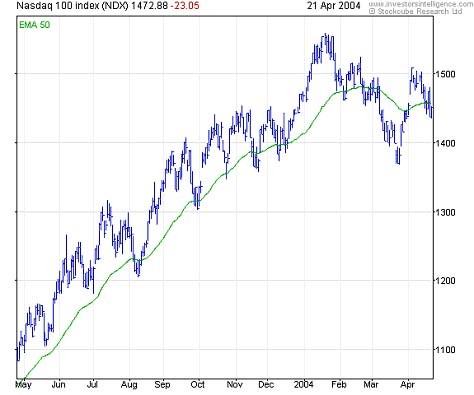Investors Intelligence Global University Technical Analysis Charts and Principals
Post on: 11 Апрель, 2015 No Comment

By visiting this website, there is very good chance that you already use technical analysis in your investment decision making process. However, it is always worth re-evaluating your tools, by taking a moment to consider the nature of technical analysis and how we might use it.
What is Technical Analysis?
Quite simply, technical analysis is the study of investor behaviour and its effect on the subsequent price action of financial instruments. The main data that we need to perform our studies are the price histories of the instruments, together with time and volume information. These enable us to form our views, based on objective facts.
Technical Analysis versus Fundamental Analysis
Fundamental Analysis concerns itself with establishing the value of stocks and other instruments. The fundamental analyst will concern himself with complex inter-relationships of financial statements, demand forecasts, quality of management, earnings and growth, etc. He will then make a judgement on the share, commodity, or other financial instrument, often relative to its sector or market peers and form a judgement whether it is over- or under-valued.
The majority of stock research from brokers or investment banks will be based on company fundamentals. At Investors Intelligence, while we admire much of this work we take a more pragmatic approach; we monitor and analyse the ways in which investors interpret this mass of fundamental data and how they then behave. This behaviour is collectively called sentiment. Our view is that investor sentiment is the single most important factor in determining an instrument’s price.
We believe that technical analysis holds the key to monitoring investor sentiment. Some investors and market “experts” believe that fundamental analysis and technical analysis are mutually exclusive. We disagree. We think they are highly complementary and should work together to tell you what to buy or sell and when to buy or sell. Many successful traders use a combination of fundamental stock selection procedures and technical analysis timing filters with excellent results.
Brief history
It is probably reasonable to assume that where commerce has flourished in civilisations so have the traders who have paid close attention to prices and their movements. However, rather than dwell upon the wonders of the Phoenician market for olive oil forwards, or the ancient Japanese and Chinese history of rice trading, our story starts with one Charles Dow, inventor of the first stock market index in 1884.

Charles Dow invented point and figure charting after he noticed that by the time important corporate news entered the public domain, the share price had already moved, due not least to insider trading. Therefore he watched the open outcry ‘curb market’, writing down prices in a notebook, looking for clues to trending market action. Finding a page of price changes confusing, not surprisingly, he decided to plot price action in graphic form.
Mr Dow also wrote a series of articles for the Wall Street Journal in the latter years of the 19th century. This body of work became known as “Dow Theory” and formed the initial basis for what we know as technical analysis today. While we will not dwell on the finer details of Dow Theory in this section, the most important concepts that Mr Dow recognised were that prices reflect the current balance of supply and demand (i.e. the hopes and fears of investor). And most importantly, an imbalance of supply and demand causes prices to form recognisable trends, up and down.
Certainly, the concept of studying price action was fairly well established by the early 20th century. By the 1940s to 1950s additional pioneers of technical analysis such as Bill Jiler, Robert Edwares, John Magee, Alexander Wheelan and Abe Cohen were making steady progress, not only in the types of charts used to depict trends, but also techniques for analysing price action.
However the acceleration in technical research techniques commenced in the late 1970s with the introduction of computers. This made it possible for hypotheses and indicators to be calculated and back tested as to their efficacy. While this has greatly expanded the body of theoretical work available on price studies, many seasoned chart readers maintain that at least 90 percent of what they need to know about prices is revealed by the price action alone.
Access to our research services requires acceptance of our Terms of Business and is subject to our Disclaimer. View our Privacy Policy . The US Stock Service and the US Market Timing service are provided by Chartcraft Inc (’Chartcraft’), which is not a regulated business. All other services are provided by Stockcube Research Limited (’Stockcube’) which is authorised and regulated by the UK’s Financial Conduct Authority. Chartcraft and Stockcube are wholly-owned by Stockcube Ltd. a UK company registered in England.














